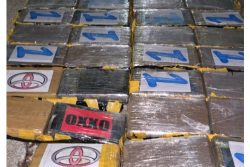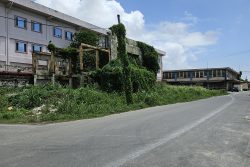Today’s column is numbered 16 in the sequence devoted to evaluating the “top-10 development challenges” that I predict spending Guyana’s Government Take from the coming petroleum sector has to navigate. The eighth challenge in the list is presently under discussion. This challenge derives from the circumstance that, since the 2000s, the Permanent Income Hypothesis (PIH) spending path has been the “dominant fiscal/budget rule” urged on petroleum-rich small poor open economies, like Guyana, as the most “efficient.”
In effect, it is under this urging that Guyana’s Green Paper proposes to establish a Natural Resource Fund (NRF) in 2019. Last week’s column reflected on the institutional/ organisational aspects of the proposed NRF; today’s considers the “fiscal rule” governing the NRF’s operations. This consideration is linked to my preceding discussions of the fiscal rule; started September 16th, 2018. Next week’s column will evaluate the proposed NRF. And, following that, I shall relate the discussion to the PIH spending rule, before turning to evaluate the ninth development challenge in the list.
Fiscal Rule
The Green Paper states the NRF has three primary purposes; namely, economic stabilisation; inter-generational equity; and, development spending. Deve-lopment spending will occur via the National Budget. And, the Green Paper lists the petroleum revenues going into the NRF in some detail. However, “excess revenues” anticipated from mining and forestry similarly going into the NRF are not detailed!
Further, the Green Paper declares the NRF’s fiscal rules “recognise” the urgency of Guyana’s 1) the human capital gap; 2) the physical infrastructure gap; 3) based on 1 and 2, the need for frontloading government spending; and 4) expected progression to a higher savings ratio, in the later years of oil production. Based on these, it states: “Government is determined to avoid the pitfalls … other countries have encountered.” The fiscal rule is termed the “Economically and Fiscally Sustainable Amount (EFSA).”
This EFSA is defined as the least of three numeric values: 1) the Economically Sustainable Amount (ESA) (para 52), 2) the Fiscally Sustainable Amount (FSA) (para 54); and 3) the “balance of the NRF.”
Item 1 (ESA) is determined by a five-member, Macroeconomic Committee, appointed by the Minister of Finance (MoF). The six indicators determining the ESA are listed as: inflation; the real effective exchange rate (REER); the balance of payments; economic growth (particularly the agricultural and manufacturing sectors); the composition of public spending; and, the external debt. No rationale is offered for excluding key macroeconomic variables, such as the domestic debt, domestic credit, interest rates or indeed the primary balance on the National Budget!
Item 2 (FSA) constitutes the numeric rule governing maximum withdrawals from the NRF in any given fiscal year. This rule is expected to secure the optimum spending path for the “three purposes” identified above. The FSA’s ceiling is equal to the larger of 1) three percent of the NRF balance or 2) 25 percent of the NRF’s revenues derived from non–oil sources.
Elaboration
The Green Paper outlines the sustainability, production, and ceiling tests that are to be applied to NRF withdrawals, using one of three Options. The sustainability test poses the question: has three percent of the balance of the NRF exceeded estimated benchmark petroleum revenues (BPR)? This BPR is calculated from the daily rate of production/output (DROP) multiplied by the long-term oil price. This “long-term price” is the seven-year average of the US Energy Information Administration’s Reference Low price for a given year, plus three years earlier and three years into the future. This test seeks to ensure that, in the long run, after daily production has peaked and is declining, savings are sufficient for the government to continue to spend three percent of the NRF. This three percent is in fact the expected real return on the NRF’s investments. This would, therefore, keep the NRF intact. Additionally, it would allow for frontloading of spending, so that more than three percent of the NRF can be withdrawn in the early years.
The production test refers to three output ranges: 1) low – less than 200,000 barrels per day (bpd) 2) moderate – more than 200,000 bpd, but less than 400,000 bpd and, 3) high – greater than 400,000 bpd. Similarly, this test enables frontloading Government spending when production is low.
The ceiling test refers to comparisons between the BPR and the FSA, both as defined above. The ceiling seeks to secure over the medium term, (when it is projected the FSA is likely to be based on the size of non-oil revenues in the NRF), that, there is no “incipient” threat of the Dutch Disease in Guyana.
Worked Examples
In Appendix 2 the Green Paper offers worked examples of the fiscal rule and provides the three Options indicated above. The NRF will adopt one of these. A crucial variable for this exercise is the ratio of three percent of the balance of the NRF to assessed benchmark petroleum revenues (BPR) as defined above. This ratio is termed x in the Green Paper and worked examples for various sizes of this ratio are given in relation to: 1) the balance of the NRF, and 2) the DROP. As explained above, the low, moderate and high rates are used for guidance.
The rule results as follows: For Option 1 in the Green Paper, 1) where x = 2/3 of DROP (for when it is less than 200,000 bpd; 2) where x = 1/2 of DROP is for production greater than or equal to 200,000 bpd but less than 400,000 bpd; and 3) where x = 1/3 of DROP is equal to or greater than 400,000 bpd. Option 2 uses three different ratios for x, namely, 4/5, 3/5 and 2/5. And, Option 3 uses 1/2, 1/3 and 1/5 for the values of x.
Conclusion
The Green Paper, in keeping with global trends in Sovereign Wealth Fund self-regulation commits fully to the NRF’s adoption of the “Santiago Principles.” This topic will be addressed next week. Additionally, the Paper commits to a very conservative investment policy. This is reflected in a projected rate of return on the NRF’s investments of three percent. It is unclear, though, if this is a return net of all costs, incurred by the NRF (direct and indirect) in the execution of its full range of responsibilities. Again, this will be addressed next week when I evaluate the proposed NRF.









